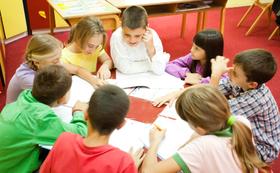Serving 463 students in grades Prekindergarten-12, Laurel Hill School ranks in the top 50% of all schools in Florida for overall test scores (math proficiency is top 30%, and reading proficiency is top 30%).
The percentage of students achieving proficiency in math is 67% (which is higher than the Florida state average of 52%). The percentage of students achieving proficiency in reading/language arts is 46% (which is lower than the Florida state average of 52%).
The student-teacher ratio of 14:1 is lower than the Florida state level of 17:1.
Minority enrollment is 23% of the student body (majority Black), which is lower than the Florida state average of 65% (majority Hispanic).
Quick Facts (2025-26)
- Grades: Prekindergarten-12
- Enrollment: 463 students
- Student-Teacher Ratio: 14:1
- Minority Enrollment: 23%
- Graduation Rate: ≥80% (Btm 50% in FL)
- Overall Testing Rank: Top 50%
- Math Proficiency: 67% (Top 30%)
- Reading Proficiency: 46% (Btm 50%)
- Science Proficiency: 40-44% (Btm 50%)
- Source: National Center for Education Statistics (NCES), FL Dept. of Education
School Overview
Laurel Hill School's student population of 463 students has grown by 21% over five school years.
The teacher population of 32 teachers has grown by 18% over five school years.
Grades Offered
Grades Prekindergarten-12
(No virtual instruction)
(No virtual instruction)
Total Students
463 students
Gender %
Total Classroom Teachers
32 teachers
Year Founded
1905
Last Day of School
Mon. May 25, 2026
Campus Size
50 acres
School Motto
'Truth and Honor'
School Mascot
Wild Boars
School Rankings
Laurel Hill School ranks within the top 50% of all 3,662 schools in Florida (based off of combined math and reading proficiency testing data).
The diversity score of Laurel Hill School is 0.39, which is less than the diversity score at state average of 0.70. The school's diversity has stayed relatively flat over five school years.
Overall Testing Rank
#1449 out of 3662 schools
(Top 50%)
(Top 50%)
Math Test Scores (% Proficient)
67%
52%
Reading/Language Arts Test Scores (% Proficient)
46%
52%
Science Test Scores (% Proficient)
40-44%
52%
Student-Teacher Ratio
14:1
17:1
American Indian
n/a
n/a
Asian
2%
3%
Hispanic
5%
37%
Black
10%
21%
White
77%
35%
Hawaiian
n/a
n/a
Two or more races
6%
4%
All Ethnic Groups
Graduation Rate
≥80%
87%
Participates in the National School Lunch Program (NSLP)
Yes
Eligible for Free Lunch
53%
47%
Eligible for Reduced Lunch
8%
4%
School Statewide Testing
School District Name
Source: National Center for Education Statistics (NCES), FL Dept. of Education
School Notes
- School Mascot: Wild Boars
Profile last updated: 02/09/2025
Frequently Asked Questions
What is Laurel Hill School's ranking?
Laurel Hill School is ranked #1449 out of 3,662 schools, which ranks it among the top 50% of public schools in Florida.
What schools are Laurel Hill School often compared to?
Laurel Hill Schoolis often viewed alongside schools like Baker School by visitors of our site.
What percent of students have achieved state testing proficiency in math and reading?
67% of students have achieved math proficiency (compared to the 52% FL state average), while 46% of students have achieved reading proficiency (compared to the 52% FL state average).
What is the graduation rate of Laurel Hill School?
The graduation rate of Laurel Hill School is 80%, which is lower than the Florida state average of 87%.
How many students attend Laurel Hill School?
463 students attend Laurel Hill School.
What is the racial composition of the student body?
77% of Laurel Hill School students are White, 10% of students are Black, 6% of students are Two or more races, 5% of students are Hispanic, and 2% of students are Asian.
What is the student-teacher ratio of Laurel Hill School?
Laurel Hill School has a student ration of 14:1, which is lower than the Florida state average of 17:1.
What grades does Laurel Hill School offer ?
Laurel Hill School offers enrollment in grades Prekindergarten-12 (No virtual instruction).
What school district is Laurel Hill School part of?
Laurel Hill School is part of Okaloosa School District.
School Reviews
2 10/10/2025
As a parent and a child who attended 7 years. Academics are good. Would like to have seen more extracurricular activities. Facility is very neat/tidy. School teachers are great but do not communicate with parents and let them know about extreme changes in grades. School has changed principals 4 times in 7 years. Majority of students are WONDERFUL! However, my child was hit by a student who's parent was also a staff member of the school and no punishment. Another student also also sexually harrassed and assaulted my child and nothing good came of it. Another family member of mine was also the victim of TWO fights. One physical. Another was when students threw rocks at him. Principal refuses to hear parents side of explanations. School Resource Officer brown noses principals and does not appear to provide a safe environment for students. I pulled my child out Friday and not to return.
5 10/10/2025
Best school ever! Seen larger schools and they just don't give the students the one on one like Laurel Hill.
Review Laurel Hill School. Reviews should be a few sentences in length. Please include any comments on:
- Quality of academic programs, teachers, and facilities
- Availability of music, art, sports and other extracurricular activities
Recent Articles

Public School Open House & Enrollment Season Guide
A parent-focused guide to the public school open house and enrollment season, with expert questions, timelines, and decision tips.

School Supply Budget 2026: Fees, Books, Tech Costs
School Supply Budget 2026 guide for parents, covering fees, textbooks, technology, and hidden extras to plan ahead.

Education Funding in America (2025 Update)
Comprehensive 2025 update on public school funding in America, new federal and state policies, per-pupil spending, and equity challenges.





